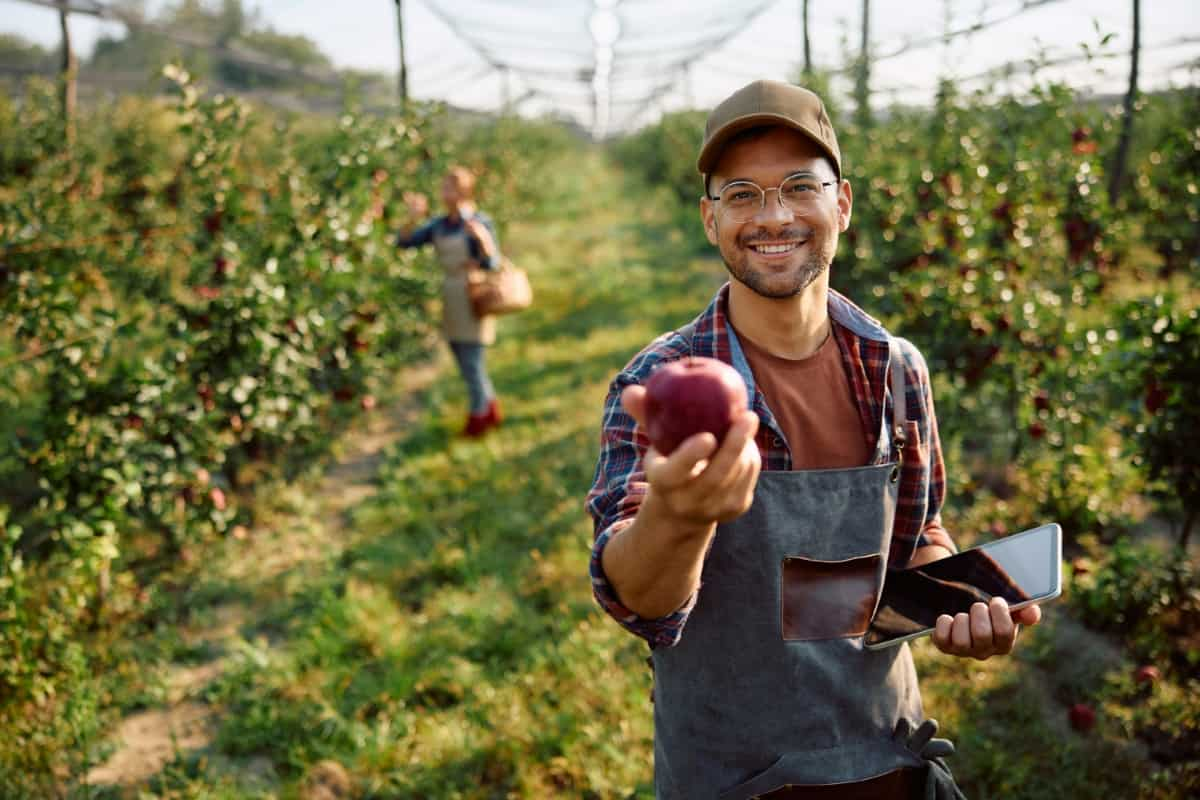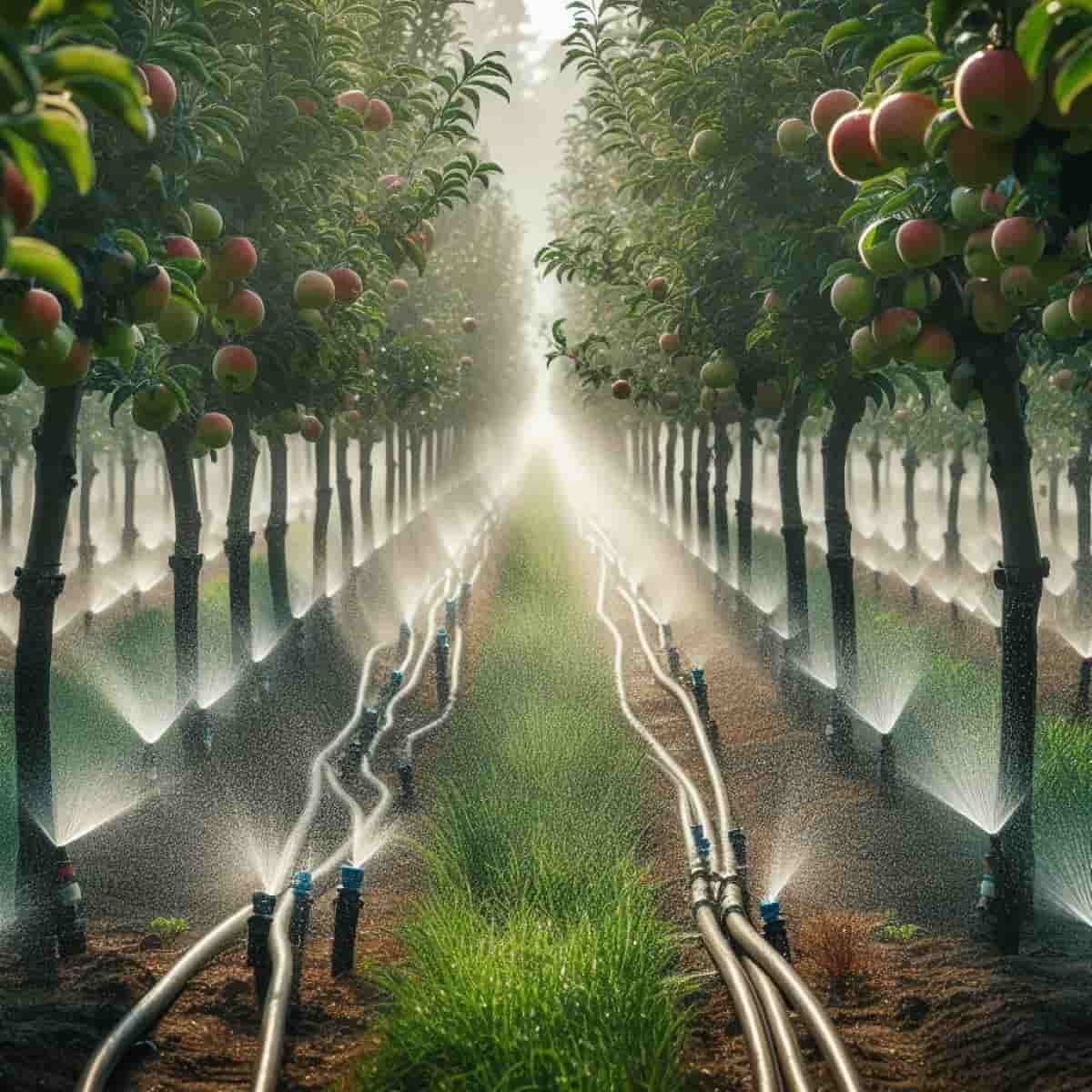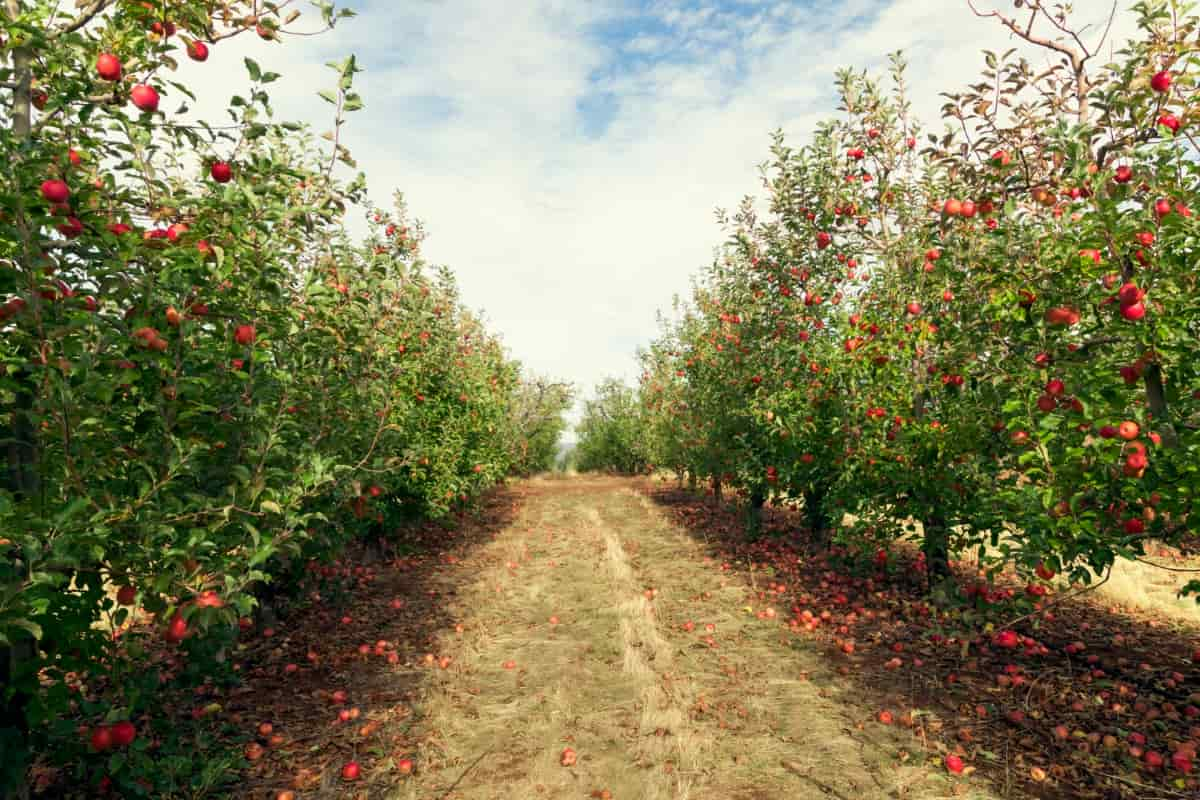Implementing drip irrigation in apple plantations involves various initial investments. The primary costs include purchasing drip irrigation equipment, installation expenses, and additional components such as filters and control systems. On average, the initial investment for drip irrigation in apple orchards can range from Rs. 80,000 to Rs. 1,50,000 per acre. This estimate considers factors like orchard size, topography, and the specific requirements of the apple trees.

Government subsidies play a crucial role in offsetting these costs for farmers. Various agricultural schemes may provide financial assistance, reducing the burden on the apple farmers. Based on the region and government policies, subsidies can cover a major portion of the initial investment, making drip irrigation an economically viable choice.
Cost of Drip Irrigation Per Acre for Apple Plantation
Evaluate the Cost of Drip Lines and Emitters for Apple Fields
The cost of drip lines and emitters is a substantial component in the overall expense of drip irrigation for apple fields. Drip lines are priced based on factors like length, material, and manufacturer. On average, the cost of drip lines can range from Rs. 15,000 to Rs. 30,000 per acre.
Emitters, responsible for delivering water to individual plants, contribute an additional cost ranging from Rs. 8,000 to Rs. 15,000 per acre. Farmers should consider factors such as emitter spacing, flow rate, and the orchard layout when determining the quantity and type of drip lines and emitters needed. Additionally, bulk purchasing and negotiation with suppliers can help in reducing costs.
Analyze the Expense of Filters and Pressure Regulators in Drip Irrigation Systems
Filters and pressure regulators are integral components of drip irrigation systems, ensuring the delivery of clean and consistent water to apple plants. The cost of these components depends on factors such as filtration capacity and pressure regulation requirements. Typically, filters can range from Rs. 5,000 to Rs. 15,000 per acre, while pressure regulators may cost between Rs. 8,000 to Rs. 20,000 per acre. These costs are essential to maintain the efficiency and longevity of the drip system by preventing clogging and ensuring optimal water pressure.
Estimate the Cost of Automation and Control Systems in Drip Irrigation for Apple
Automation and control systems enhance the efficiency of drip irrigation by allowing precise control over water delivery. The cost of these systems depends on factors such as the level of automation, the number of zones, and the complexity of the control interface. On average, the cost of automation and control systems for drip irrigation in apple orchards can range from Rs. 25,000 to Rs. 50,000 per acre.
While the initial investment in automation seems significant, the long-term benefits include improved water use efficiency, reduced labor needs, and the ability to monitor and adjust the system remotely. Farmers should consider their orchard size, layout, and personal preferences when deciding on the level of automation required, balancing upfront costs with potential long-term savings.
Assess the Price of Pumps and Pumping Stations for Drip Irrigation in Apple Farming
Pumps and pumping stations are critical components in a drip irrigation system responsible for delivering water from the source to the orchard. The cost of pumps depends on factors like capacity, lift height, and efficiency. On average, the cost of pumps and pumping stations for drip irrigation in apple farming can range from Rs. 30,000 to Rs. 50,000 per acre.
In case you missed it: How to Convert Sprinkler to Drip Irrigation: Step-By-Step Guide for Beginners

Farmers should carefully assess their water source characteristics, considering factors such as depth, distance, and flow rate, to select an appropriately sized pump. Additionally, investing in energy-efficient pumps can lead to long-term operational cost savings. While the upfront cost of pumps may be significant, their reliability and efficiency are vital for the success of drip irrigation in apple farming.
Explore the Cost of Fertilizer and Nutrient Injection Systems in Drip Irrigation for Apple
Fertilizer and nutrient injection systems play a crucial role in enhancing apple orchard productivity through precise nutrient management. The cost of integrating these systems into drip irrigation can range from Rs. 20,000 to Rs. 30,000 per acre. This estimate includes the expense of equipment such as injectors, tanks, and monitoring devices.
While this investment contributes to optimized nutrient delivery and improved crop yield, farmers should carefully analyze their orchard’s nutrient requirements and consult with agronomists to determine the most suitable injection system for their apple cultivation.
Calculate the Labor and Installation Costs for Drip Irrigation in Apple Plantations
Labor and installation costs are significant considerations in the adoption of drip irrigation for apple plantations. On average, labor costs for installing drip systems can range from Rs. 15,000 to Rs. 30,000 per acre. This includes activities like trenching, laying pipes, and installing emitters.
Additionally, hiring skilled labor for system calibration and testing may incur extra expenses. Farmers should budget for these costs alongside equipment expenses to ensure a smooth and efficient installation process, thereby maximizing the benefits of drip irrigation in their apple orchards.
Factor the Maintenance and Repair Expenses for Drip Irrigation Systems in Apple Farming
Annual maintenance costs, covering activities like system flushing, filter replacement, and emitter inspection, can range from Rs. 5,000 to Rs. 15,000 per acre. Emergency repair expenses may vary based on the complexity of the issue but typically range from Rs. 10,000 to Rs. 25,000 per occurrence. To minimize long-term costs, farmers should prioritize regular maintenance, invest in durable components, and stay vigilant in identifying and addressing potential issues promptly.
In case you missed it: Organic Farming Costs Per Acre: Comparative Analysis with Conventional Farming Costs

Energy Costs Associated with Drip Irrigation in Apple Cultivation
The energy expenses can vary based on factors such as pump efficiency, the depth of the water source, and the distance it needs to be transported. On average, energy costs for drip irrigation in apple farming can range from Rs. 8,000 to Rs. 15,000 per acre annually. Implementing energy-efficient pumps and optimizing irrigation schedules can contribute to minimizing these operational costs, making the overall system more sustainable and cost-effective.
Government Subsidy for Apple Drip Irrigation
Various government schemes and subsidies are available for apple farmers. Depending on the region and specific agricultural policies, farmers may receive subsidies covering a significant portion (45-50%) of the initial investment in drip irrigation systems. These aim to reduce the financial burden on farmers, making the transition to drip irrigation more accessible and economically viable.
Farmers should actively engage with local agricultural authorities to explore available subsidy programs, understand eligibility criteria, and take advantage of the financial support provided to promote sustainable and water-efficient practices in apple cultivation.
Compare the Overall Operational Costs of Drip Irrigation vs. Traditional Methods in Apple Farming
Comparing the overall operational costs of drip irrigation with traditional methods in apple farming reveals potential efficiency and economic benefits. Drip irrigation systems, while incurring initial setup costs, often demonstrate lower operational expenses over time. Factors such as reduced water usage, minimized labor requirements and improved nutrient management contribute to long-term savings.
In case you missed it: How to Prevent Apple Fruit Rot Naturally: How to Control with Natural and Organic Treatment

In contrast, traditional methods, such as flood or furrow irrigation, may involve higher water consumption, increased labor costs, and less precise nutrient application. While drip irrigation may have higher upfront costs, the combination of potential government subsidies, lower energy expenses, and enhanced efficiency can result in a favorable cost-benefit ratio over the lifespan of the orchard.
Conclusion
In conclusion, adopting drip irrigation in apple plantations involves initial investments covering equipment, installation, and maintenance. Government subsidies can significantly offset these costs, making drip irrigation economically viable. While the upfront expenses may seem substantial, the long-term benefits of water efficiency, improved yield, and potential subsidy support make it a prudent investment for apple farmers.
- Feed Your Flock for Less: Top 10 Tips to Save on Chicken Feed
- Ultimate Guide to Ossabaw Island Hog: Breeding, Raising, Diet, and Care
- Hatching Answers: The Top 10 Reasons Your Chickens Aren’t Laying Eggs
- Eggs and Economics: Breaking Down the Cost of Raising Backyard Chickens
- Defend Your Greens: Proven Methods to Keep Iguanas Out of Your Garden
- Ultimate Guide to Cinnamon Queen Chicken: A Comprehensive Guide for Beginners
- Ultimate Guide to California Tan Chicken: Breeding, Raising, Diet, Egg-Production and Care
- Ultimate Guide to Marsh Daisy Chicken: Breeding, Raising, Diet, and Care
- 10 Types of Chicken Farming Businesses You Can Start for Profits